10 Small Ways That Disney Theme Parks Immerse You Completely
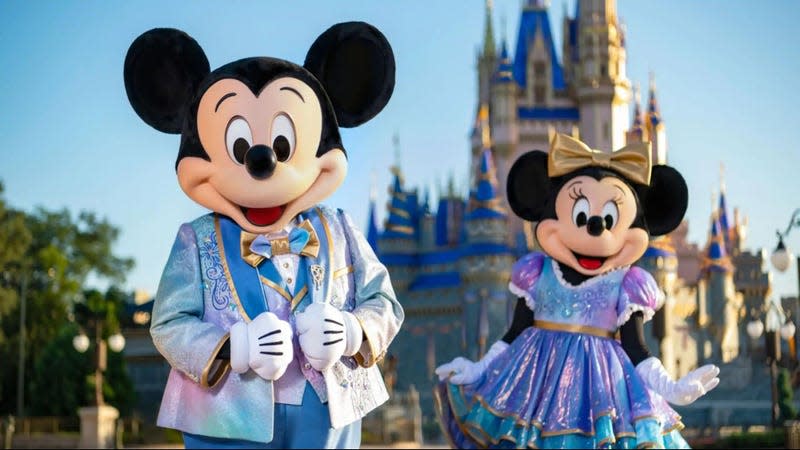
There are five ‘Keys’ that the Disney theme parks teach their Cast Members. The Keys inform Guest relations, and they are ordered hierarchically, from most to least important:
Safety. Courtesy. Inclusion. Show. Efficiency.
Read more
The first Key is self-evident; Safety always takes precedence, especially when serving people en masse. But the ordering of the other four Keys is noteworthy, at least to me. Both Courtesy and Show take precedence over Efficiency. At Disney, it is more important to create individual memories for Guests—by being upbeat and staying in character—than it is to maximize output.
Whenever I think of Disney, I think of the Five Keys and how their prioritization—of immersion and theatrical presentation —sets Disney apart from its competitors. It’s a philosophy that manifests itself in ways both big and small, and it has the cumulative effect of conjuring that “Disney Magic” that keeps people coming back to the theme parks, year after year.
There are some obvious ways that Disney maintains its facade: by keeping a Spartan level of cleanliness, for example, or playing themed music for different areas of the park. But Disney also employs more subtle, clever tactics that work on a Guest’s subconscious. Here are 10 of the more interesting ones.
Pumped-In Smells At Disney

When I was a teenager in the late ‘90s, I went on a “Keys to the Kingdom” tour of the Magic Kingdom. It takes Disney guests (16 and older) on a backstage excursion of the theme park’s facilities—to show how the Magic is made. And one highlight our tour guide pointed out to us was an outmoded container and pump, which once dispersed the smell of freshly baked chocolate chip cookies onto Main Street.
Disney has continued this practice to the present day, in more sophisticated ways. If you look carefully at the foundations of many of the buildings, you might spot some nondescript vents. They are most obvious outside the Ice Cream Parlors and Candy Shops, which smell like vanilla and sugar.
Disney also uses smell technology in its attractions. Soarin’ incorporates the smells of grass, fruit, and sea air. And over the years, Disney has continued developing this technology; in 2019, the company filed a patent for a new type of “scent dispersing system,” which can blend different aromas in a single setting.
Obscured Lines of Sight At Disney
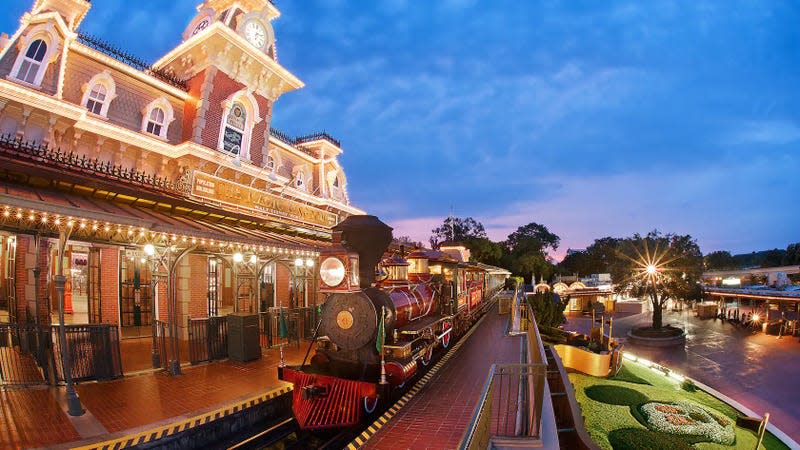
The Disney Parks are all about staging—about the concealment of visual elements until the exact time when Imagineers want Guests to see them. For example, the Railroad Station and overpass in the Magic Kingdom block Guests from seeing Cinderella’s Castle until they are on Main Street, where they’ll get an idealized, head-on view.
Within the park, the Imagineers situated the trees and foliage to separate the lands from one another, so that you cannot see Adventureland from Liberty Square, or see Tomorrowland from Frontierland. The intent is for each area to exist as a unified, immersive experience. The most inventive example of this is in Disneyland’s Adventureland, where if you stand on the second floor of the Jungle Cruise queue, you cannot see the Matterhorn in Adventureland, because it’s covered by a tree that’s cut in the shape of the mountain.
Forced Perspective
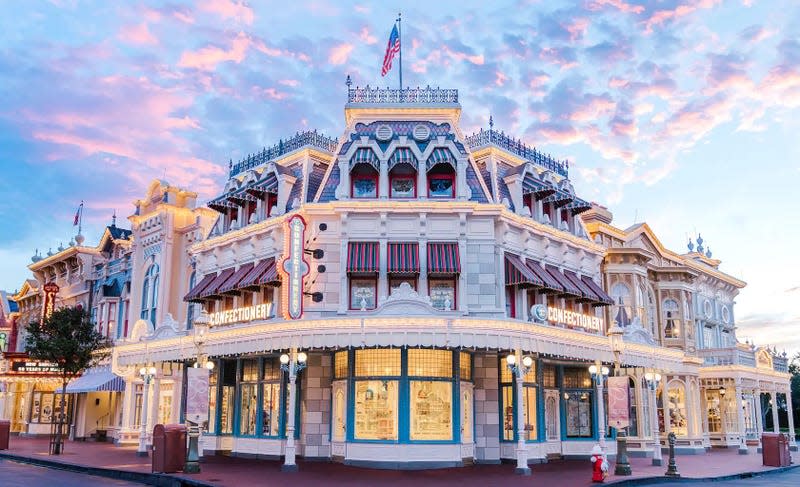
Every building on Main Street is of a uniform, modest height, so as not to distract from the castle at the end of the street. But when you’re walking down Main Street, the buildings somehow appear bigger and more imposing, thanks to an optical illusion known as forced perspective.
The artists designed the buildings’ exteriors so that the top floors are shorter than the ground floors, and that creates an illusion of height, especially when viewing the buildings from street level. And it’s not the only time that Disney applies this trick. The Imagineers use forced perspective on the castle as well, which is similarly disproportionate.
Disney’s Tunnel Systems
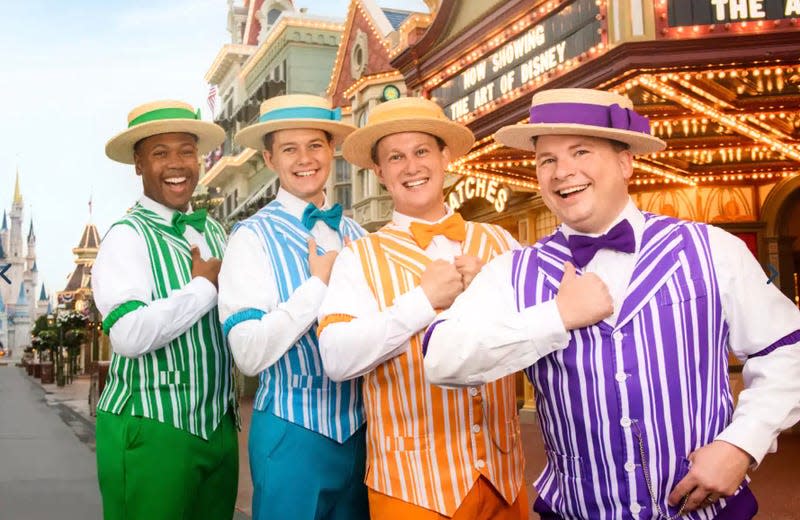
The Magic Kingdom theme park at Walt Disney World is actually the 2nd floor of a massive complex built underground, connected via massive tunnels known as utilidors (utility corridors). This is where a lot of the nut-and-bolts stuff, like trash removal and computer systems (which coordinate the parades and the timed operations of the park), are handled and housed.
It’s also where the costumed Cast Members report to work, grab something to eat, and get dressed. They’ll travel, via the tunnels, to the area underneath their assigned ‘Lands,’ and then go ‘upstairs’ to interact with Guests. This is why you never see an astronaut walking through Tomorrowland, or an American colonist walking through Adventureland. The only way a non-Disney Parks employee can see the tunnels is by going on the aforementioned “Keys to the Kingdom” tour, which includes a walkaround of the facility.
“There’s only one Mickey.”
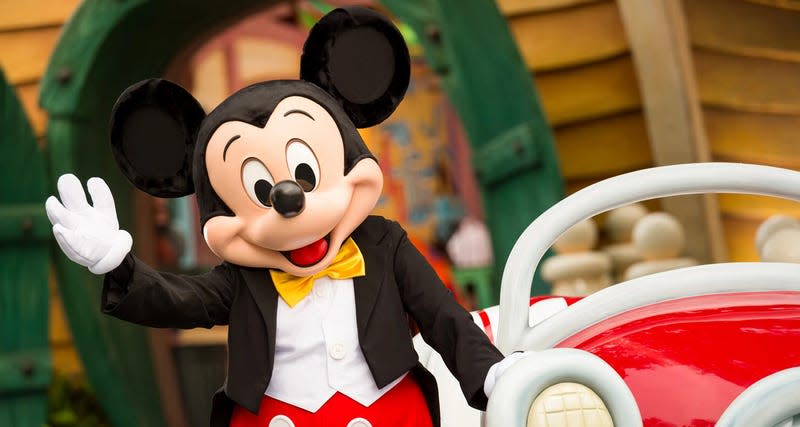
In my prior article on Disneyland, I wrote about an interaction I had with a backstage Cast Member. I asked him how many Mickeys can be in the park at the same time without running into each other. He looked me in the eye and said, “There’s only one Mickey.”
So apparently, this is a line that a lot of Disney Cast Members have been trained to use. And they are doing it for a reason—not to be antagonistic or needlessly adherent, but out of an abundance of caution, for a child that might be in earshot. This is known colloquially as the ‘Rule of One’—the guiding principle that Mickey Mouse is ‘real,’ and that every costumed performer, for the time that he is onstage, is the ‘real’ version of the character—not a person playing the character. It’s also why a lot of Cast Members will not say they played a character role; they will say they are a ‘friend of Belle,’ or a ‘friend of Ariel.’
The Show Line At Disney
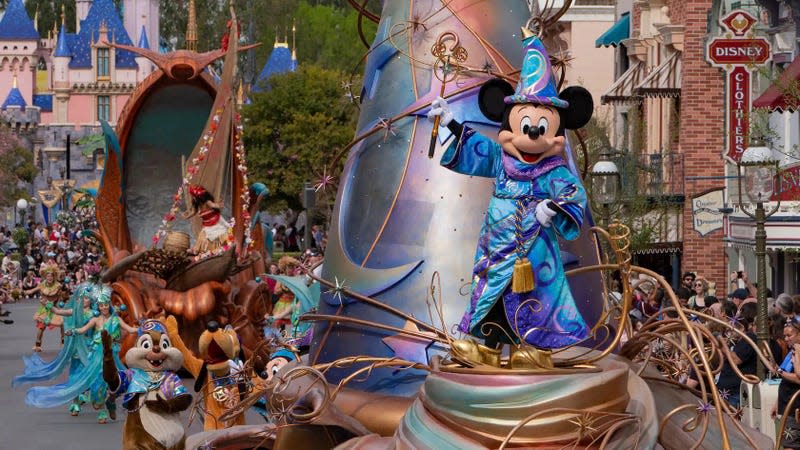
When I was a child, I remember watching the costumed characters walk backstage after signing autographs at Walt Disney World. I would crane my neck and watch them for as long as I could, hoping that I could spy something interesting. Maybe Donald Duck would relax or start walking like a normal person or even take off his head, believing, unwittingly, that he was out of visual range.
Years later, when I took the Keys to the Kingdom tour, I learned that Disney had accounted for nosy kids like me. In the backstage area near the exits, there was a literal line, painted on the ground, that delineated how far a curious Guest could see if they stood at an angle, craned their neck, and tried to look backstage.
So long as they stay behind that line, Cast Members are safe from public view and can drop the act. But once they pass it, they have to be in character—just in case. This is particularly important during the parades, when the massive floats are queued up outside Main Street, and the Cast Members need to know exactly when to start dancing and waving for the crowds.
Autograph Training At Disney
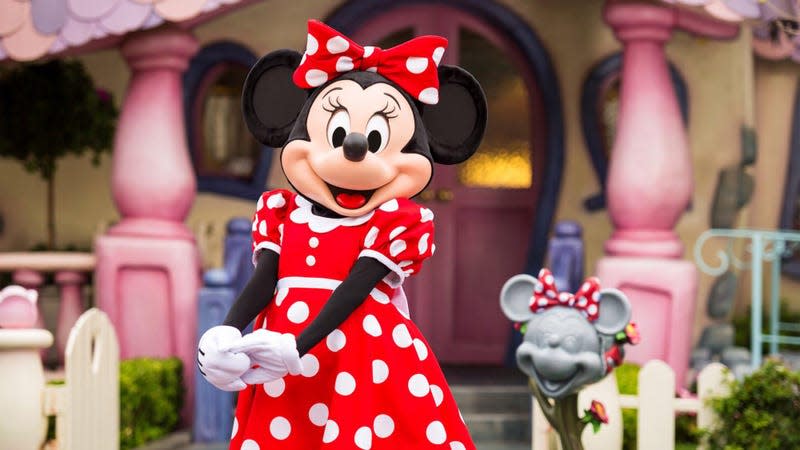
Let’s talk more about what Disney calls Character Integrity and the Rule of One—the means by which Disney creates the illusion that there’s only one Mickey, rather than multiple performers portraying the same role over a period of decades.
It starts with casting. To portray a specific character, you have to fall within a specific height range, so that you’re indistinguishable from another performer from another day or another year. Minnie Mouse, for example, requires a performer who is between 4'8 and 5'2.
But it also comes down to behavior and body language. Cast Members study their characters’ films, so they can act and move the way their characters do. They also practice their autograph; every character has a stylized autograph, and the cast members try to make theirs look as close to it as possible—again, to maintain fidelity across multiple days, months, and years.
Incognito Cast Members At Disney
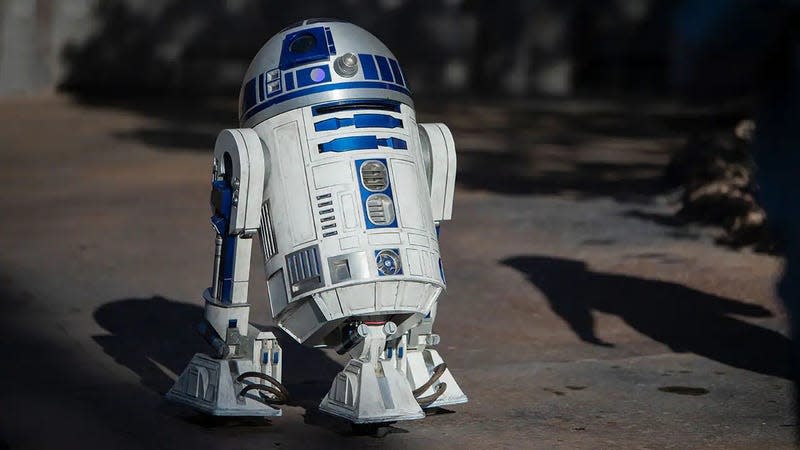
One of the coolest things that you can see in Walt Disney World and Disneyland is a freestanding R2-D2, roaming the park and beeping at children. He appears to be self-sufficient, without any Cast Member explicitly controlling his movements. But there is a remote control operator there. He’s just hiding in plain sight.
There are a lot of Disney Cast Members who are dressed as tourists, and they are either working security (don’t ever assume you’re not being watched) or they’re doing secret tasks, like controlling Star Wars droids. The two times that I’ve seen the R2-D2 controller, it was a man in sunglasses, walking at a slight distance from the droid.
The first time (in 2012) the man had a coat over his hands, and he was walking with them behind his back. The second time (in 2022), the man had a remote control that was disguised as a soda souvenir cup. He followed the robot as he got close to the backstage area, tipped his hat as a signal to someone backstage, and then eventually wandered backstage himself.
Important note: Do not be that guy. Do not harass these people while they’re busy, or take pictures of them, or otherwise spoil the experience for the people around you. But if you’re observant, it’s a nice detail to keep to yourself.
‘Invisible’ Colors At Disney
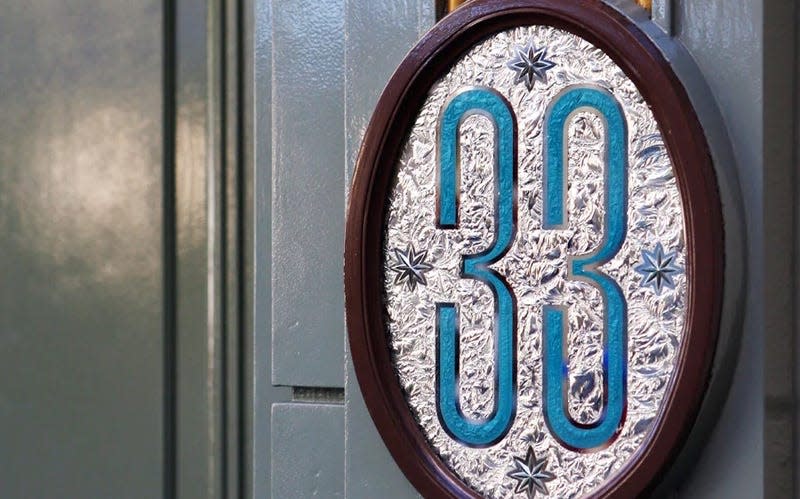
There are two colors that Disney uses to hide in plain sight: “Go Away Green,” is a sort of muddy, olive green, and “Blending Blue,” is an indistinct sky blue. Whenever you see construction or attractions that are under refurbishment, they’re usually covered by partitions and tarps, and they’re usually one of these two colors, which blends in with the natural surroundings. They’re also used on a lot of the waste bins; thus, Guests will only notice the bins if they’re explicitly looking to throw something out.
They’re also used to blend theme park attractions into the surrounding area. Most of the time, an attraction (Splash Mountain, for example) does not occur in the actual Mountain. The majority of the ride takes place in a ‘show building’ behind it, hidden from public view.
But sometimes, the show building is too big to hide completely, and Disney relies on camouflage to make it disappear. The new Guardians of the Galaxy: Cosmic Rewind at Epcot is an indoor coaster, and its entire building is painted to make it blend into the Florida sky.
Interactive Queues At Disney
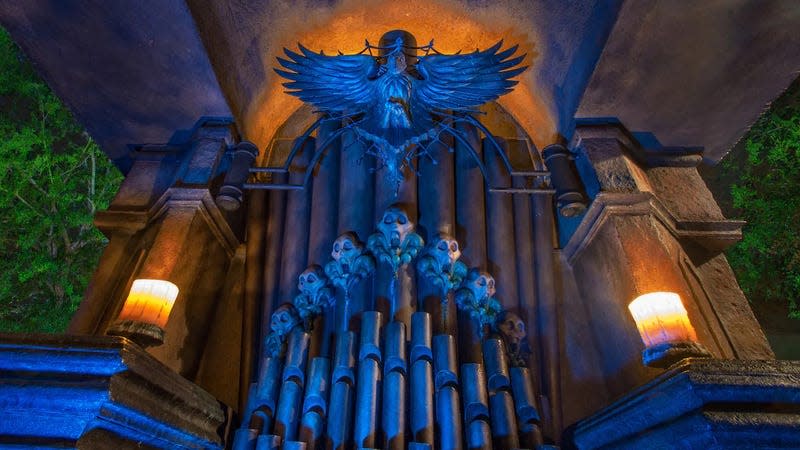
And lastly, there’s just a ton of little quality-of-life details that get continually added into the Parks, even into the older attractions. One of my favorite details was added in 2002 to the Haunted Mansion: a headstone for Madame Leota.
To offset the long waits and large crowds, Disney makes the queues for the attractions as interactive as possible. And the coolest thing about this Leota tombstone is that the face will occasionally open its eyes, look around, and then close its eyes again.
It happens just often enough that you might catch it once, maybe twice, if you’re specifically looking for it. And it happens seldom enough that you could tell the people next to you what you saw, and they would not believe you.
In 2011, the Disney Imagineers added an entire extension to the outside graveyard in Walt Disney World, with a stone organ that plays when you touch it; a sea captain’s crypt that squirts water when you pass by; and a stone bookshelf that randomly pops its books out.
More from Kotaku
Sign up for Kotaku's Newsletter. For the latest news, Facebook, Twitter and Instagram.

